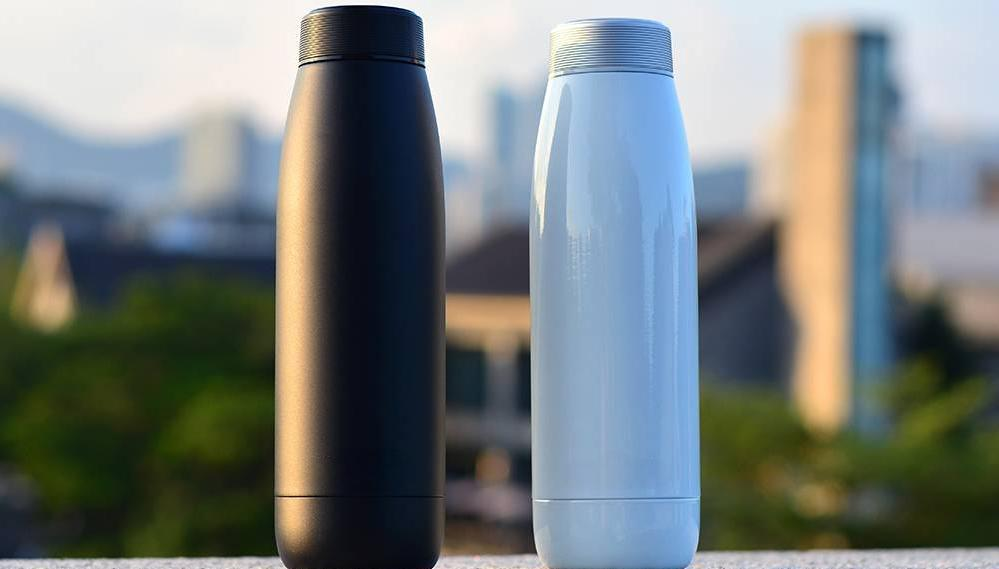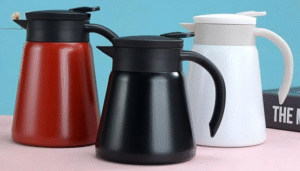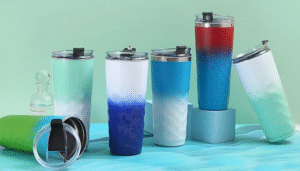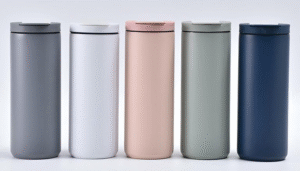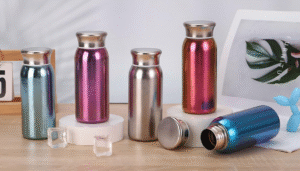1. Ways of heat dissipation
The main ways of heat loss are heat conduction, heat radiation, and heat convection. Thermal conduction refers to the transfer of heat from a high-temperature substance to a low-temperature substance through a medium. Thermal radiation is electromagnetic wave radiation caused by heat, which transfers energy to the outside world in the form of electromagnetic waves. Thermal convection is the process of heat transfer caused by relative displacement of particles in a fluid, occurring between fluids.
2. Стратегия термоизоляции чашек-термосов
Insulated cups have different strategies for these three ways of heat loss.
(1) The body of the heat conduction insulated cup will undergo vacuum treatment because the thermal conductivity of the vacuum layer is poor, so the vacuum operation can effectively block the conduction of heat to the outside world.
(2) The inner layer of the thermal radiation insulated cup will be made of silver (медь) layer material and formula, which will be polished and polished on the surface to increase surface smoothness, improve heat reflection efficiency and insulation performance.
(3) The body of the heat convection insulated cup adopts a double-layer sealed structure, which can avoid convection between the heat inside the cup and the outside air, thereby reducing heat convection.
3. Insulation process
Most popular thermos cups nowadays use the vacuum coating method on the cup body, which involves vacuum treatment of double-layer stainless steel thermos cups, coating and sealing technology to minimize heat loss.
(1) In order to improve the vacuum degree, manufacturers will add non evaporative absorbers such as titanium and zirconium to the vacuum layer to ensure the vacuum degree in the vacuum layer.
(2) To improve the heat reflection efficiency, the inner wall of the insulated cup will be polished with copper or silver plating, and some energy-saving film technology (which can reflect more than 90% of infrared radiation) will be applied to the insulated cup to enhance its insulation effect. The process of silver plating and copper plating is widely used in practical production because silver and copper have good reflective properties in various wavelength bands and can reflect infrared rays well.
(3) In terms of craftsmanship, some manufacturers use double-layer stainless steel and narrow the cup mouth with a double lid design because the vacuum layer of the insulated cup does not cover the cup mouth, so the cup mouth of the insulated cup is a major destination for heat loss. Due to frequent movement and opening of the cup mouth and cup, the vacuum layer of the thermos cup cannot be covered. Поэтому, we should try to minimize the size of the cup mouth and adopt a double lid design to reduce the loss of heat from the cup mouth.
(4) A thermal insulation cup that uses composite phase change materials to achieve rapid cooling. It adds a composite of metal phase change materials (such as gallium based alloys, bismuth alloys, tin based alloys) and non-metal phase change materials (paraffin materials, fatty acids, ester hydrates, и т. д.) in the interlayer of the water cup. By utilizing the high thermal conductivity of metal phase change materials, it quickly conducts heat from hot water and transfers it to non-metallic phase change materials with high energy density, storing the heat. Quickly cool the hot water that scalds the mouth to a suitable drinking temperature. В то же время, non-metallic phase change materials that store heat will continuously release heat, and through the conduction of metallic phase change materials, hot water can be maintained within a suitable drinking temperature range for a longer period of time. This achieves the goal of rapid drinking and maintaining a suitable drinking temperature for a long time.
(5) There is also a type of insulated cup that is heated and insulated. After connecting the USB interface on the heating base to an external power source, it can provide power to the nickel hydrogen battery, the interlayer of the bag body, and the electric heating film in the base to heat the kettle; After the external power supply is stopped, the nickel hydrogen battery can directly supply power to the electric heating film, achieving continuous insulation effect and solving the problem of difficulty in drinking hot water during outdoor missions in high cold areas during winter. There is also light energy heating, which uses an outer plastic and inner steel material. Three lightweight flexible thin film solar panels are embedded on the surface of the shell, which can convert light energy into electrical energy and provide power heating for the flexible heating plate attached to the outer wall of the inner liner, which is energy-saving and environmentally friendly.



